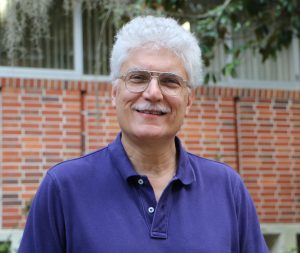 The fact that mosquito-borne illness is a threat to public health is not news. Nor is the practice of spraying insecticides to control the mosquito population. The key to mosquito control is testing—determining which methods and products are effective, efficient, and safe. Recent work by ECE Professor and Warren B. Nelms Institute for the Connected World member William Eisenstadt, supported by a grant from the Centers for Disease Control, seeks to ensure that the testing of mosquito control methods is more precise and more rigorous, taking into account atmospheric and environmental conditions. Equipping the traditional ‘bioassay’ cages with networked sensors which are capable of delivering instantaneous data to handheld devices, Eisenstadt’s proposal would create more precise datasets which would in turn help develop insecticides which are more effective and safe.
The fact that mosquito-borne illness is a threat to public health is not news. Nor is the practice of spraying insecticides to control the mosquito population. The key to mosquito control is testing—determining which methods and products are effective, efficient, and safe. Recent work by ECE Professor and Warren B. Nelms Institute for the Connected World member William Eisenstadt, supported by a grant from the Centers for Disease Control, seeks to ensure that the testing of mosquito control methods is more precise and more rigorous, taking into account atmospheric and environmental conditions. Equipping the traditional ‘bioassay’ cages with networked sensors which are capable of delivering instantaneous data to handheld devices, Eisenstadt’s proposal would create more precise datasets which would in turn help develop insecticides which are more effective and safe.
The Usual Way
Insecticide field trials usually involve aspirating mosquitos in “bioassay” cages which are placed at specific distances within a test area. An applicator conducts adulticide spraying by driving in a specific pattern around the bioassay cages. Effectiveness is determined by assessing the number of dead and alive mosquitoes after the adulticide application. In order to figure out the droplet size and volumetric measurements of the adulticide approaching the bioassay cage, droplet-collecting microscope slides or a rotary impactor is commonly used. The impactors are set throughout the study grid but not at each bioassay cage.
Mosquito control districts and industry partners depend on the data from these field trials to improve control of both nuisance and mosquitos that carry diseases, to evaluate new active ingredients and formulations of products, and to evaluate for insecticide resistance.
The Problem
The problem with the usual methodology is that field trials, just like actual adulticide applications, are heavily influenced by environmental factors (wind, temperature, humidity). These factors, especially air velocity, impact the ability of the insecticide aerosol to stay suspended and disperse to the targeted areas and come into contact with mosquitoes. Since wind direction and speed can change instantly, the droplet-collecting microscope slides or impactors used in the trials cannot reliably provide the droplet size or the droplet density penetrating each of the evaluation bioassay cages.
This consistent issue with adulticide field trials has led to the need to develop a way of measuring both adulticide parameters (adulticide concentration, droplet size, droplet density) in combination with environmental conditions at the bioassay cage level with capability to provide real-time results. Thus, the development of a smart bioassay cage for mosquito adulticide evaluation would allow for a more accurate way to analyze the field trial applications and contribute to the relative efficacy, feasibility, and limitations of different products and technologies on mosquito control. The real-time monitoring during field trials would provide information for equipment adjustments and to perform immediate retrials to correct for unforeseen field-testing issues.
The Project
Eisenstadt’s group will develop a prototype smart mosquito bioassy cage that:
- evaluates the properties of insect spray aerosols
- records environmental information at spraying time such as temperature, humidity, timestamp and location
- reports the information wirelessly to a cell phone or a computer
AMCD will measure the performance of various rotary impact sensors in the field and determine the best sensors, sensor placement and mosquito cages to be used to create smart bioassy cages. Then, AMCD will field-test smart bioassy cages, measure adulticide spraying parameters and environmental parameters, perform bio-statistical analyses and develop aerosol sensor calibration/cross-reference information. The proposed research would provide a WiFi or cell-modem microcomputer module with aerosol and environmental sensors (temp, wind and humidity) that works with a common bioassy cage or independently on a vertical pole in the test environment. The module would of course have to be rugged and able to withstand the conditions during the field test. The cage would be easily turned on or off, would reliably link with a computer or cellular device, and would be easy to clean after the conclusion of testing. The project would ultimately create compact, low-power electronics for data collection and real-time reporting. The goal would be create a prototype comprised of parts which would cost less than $400.